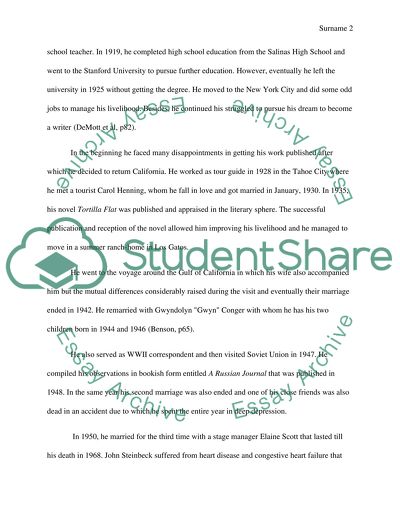Cite this document
(“Biography paper on John Steinbeck Research Example | Topics and Well Written Essays - 2000 words”, n.d.)
Retrieved from https://studentshare.org/literature/1578657-biography-paper-on-john-steinbeck
Retrieved from https://studentshare.org/literature/1578657-biography-paper-on-john-steinbeck
(Biography Paper on John Steinbeck Research Example | Topics and Well Written Essays - 2000 Words)
https://studentshare.org/literature/1578657-biography-paper-on-john-steinbeck.
https://studentshare.org/literature/1578657-biography-paper-on-john-steinbeck.
“Biography Paper on John Steinbeck Research Example | Topics and Well Written Essays - 2000 Words”, n.d. https://studentshare.org/literature/1578657-biography-paper-on-john-steinbeck.


